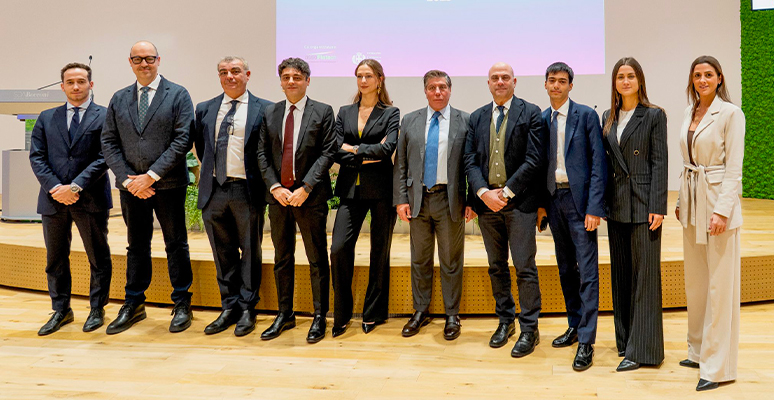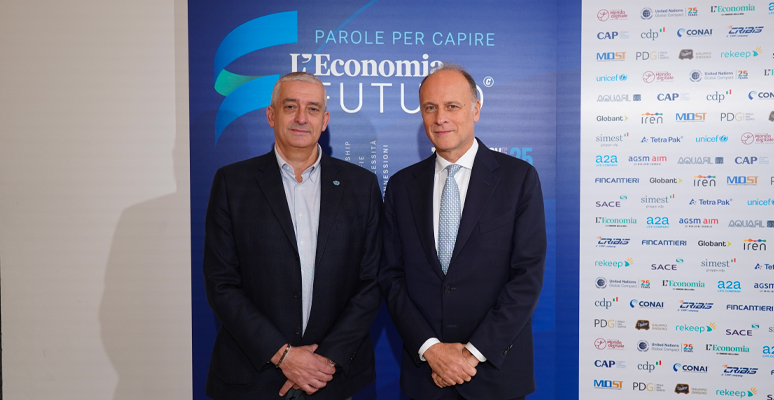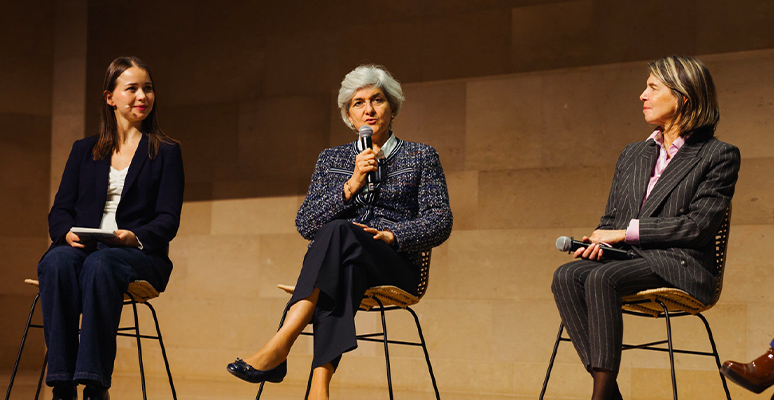The impact of new technologies in retail
Smart grocery retail (Egea, 2021) is the new book by Chiara Mauri (Professor at LIUC Cattaneo University and SDA Fellow of Marketing and Sales), Paolo Pasini (Associate Professor of Practice of Information Systems) and Elisa Pozzoli (SDA Fellow of Information Systems). The work is the product of the collaboration between the DRIIM Laboratory at SDA Bocconi School of Management and Accenture Customer Innovation Network (ACIN), and is equally engaging for practitioners as well as readers who are curious to learn more about cutting-edge technological in grocery retail. The entire value chain for mass-market packaged goods with high purchase frequency is seeing a radical transformation. And the undisputed drivers of this revolution are digital technologies, with applications that have major impacts on all the players involved.
Naturally, Italian and foreign producers are perfectly positioned to observe the most recent advances in grocery retail. Thanks to digital tools, these companies interface with distributors, retail stores and - more and more often - directly with consumers (D2C), testing out new solutions and innovations. The cases provided in this book by the book are extremely insightful examples, giving readers a clear snapshot of the current scenario.
We asked the authors to answer a few questions on the (smart?) impact of new technologies at various levels.
Digital technologies are being used in the entire retail value chain: from producer to consumer, via distributors and physical or virtual stores. What technologies are we talking about exactly?
Emerging digital technologies, some are new and still in the testing stage (such as biometric recognition or gesture recognition on consumers. Others have been on the market for some time now (smart tags or RFids, data analytics platforms, e-commerce platforms), but they’re often being applied in innovative, original ways, and most importantly they’re being integrated with management systems of the stores, the retailers and the suppliers.
How is the experience of consumers changing in physical store? What technologies are they using, in particular? What technologies do they have to have and which tools are available? And what advantages to they get from using them?
The consumer experience in purchase processes can no longer happen without technologies, which we find in both physical and digital channels. But not everyone who goes into a store is familiar with the individual technologies, and even people who know how to use them don’t always do so. Consumers can use the so-called front-office technologies in the store or remotely, which can support the purchase process, in some cases making it experiential. These technologies intervene in various stages of the purchase process: from recognizing the individual to offering product information; from helping make a shopping list to actually doing the shopping via self-scanning to paying the bill with self-checkout. We can also think of the chance to shop using hybrid systems such as click-and-collect or drive-thru. There are multiple advantages for buyers, depending on the type of purchase occasion: front-office technologies speed up the purchase process, streamline transactions, personalize value propositions, and educate – and even entertain – customers.
As far as digital management of the value chain, what are the impacts on employment?
It’s hard to answer that question, because so many factors come into play. For example, a buyer who makes more and more purchases via e-commerce, replacing the physical retail channel, generates a reduction in store personnel. But then she’ll need delivery service, which is provided by dedicated personnel. The number of employees decreases on one side, and increases on the other. We still don’t know the net result on employment. Patrons who do their shopping using self-scanning and pay at the self-checkout cause a reduction in store personnel, but these workers can take on other tasks.
Will new professional roles emerge?
The production of masses of data, which is also possible thanks to behavior tracking technologies, gives rise to new jobs that call for sophisticated skills: this is progress, because it expands the horizons of knowledge. Think of experts in user experience or agile, data scientists or specialists in digital technologies. What’s more, other professional roles that have already been firmly established are becoming more and more essential. Just to name a few, think of cloud architects, IT innovation managers, retail service designers, customer experience experts. Beyond the emergence of new roles, we can also see that all the traditional jobs are evolving toward integration between the high-touch physical world and the high-tech digital world.
Are there drawbacks or criticalities associated with the introduction of digital in retail?
Of course, as with all technological innovations, we have to be guided by method and realism to carry out a healthy IT/digital innovation process. Generating ideas and testing digital technologies is easy; developing the more promising ones and scaling them up on the market is more difficult. The world of grocery retail is often depicted as a great big amusement park, where it’s relatively easy to apply technologies of every kind. But corporate management evaluates technologies based on performance and the business results generated by digital innovation. And against this litmus test, only a few technologies really measure up: start-ups and research centers can supply ideas and innovative technologies, but the true digital innovation arises only from a collaboration between retailers and producers. By integrating their complementary competencies, they can exploit the potentialities of each technology to create purchase experiences that are original, engaging, and sustainable in every respect.
SDA Bocconi School of Management.
At Call Tech Action, the technologies that ...

SDA Bocconi with UNICEF and Corriere della ...

Regenerating nature can save 50% of the ...



